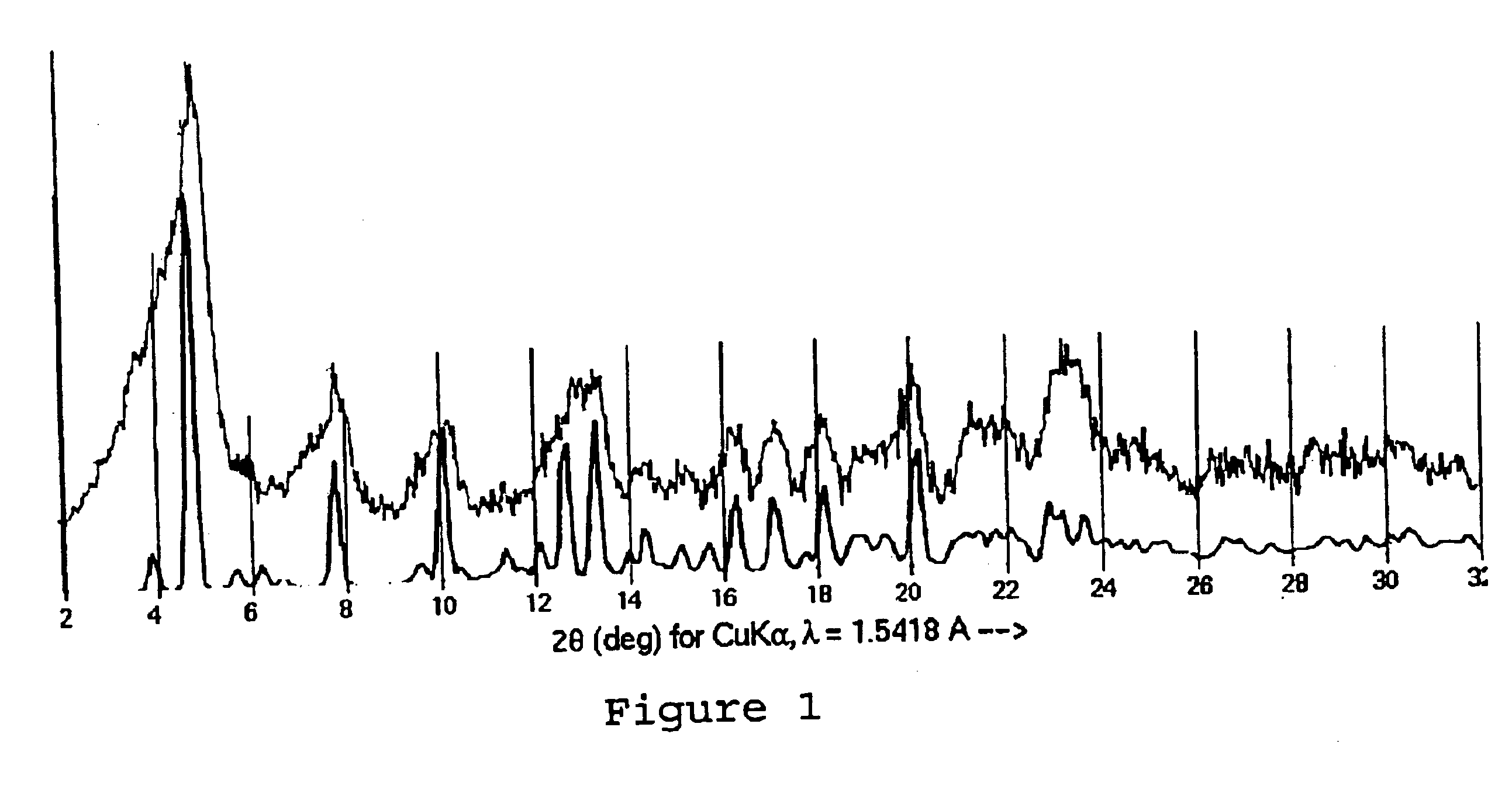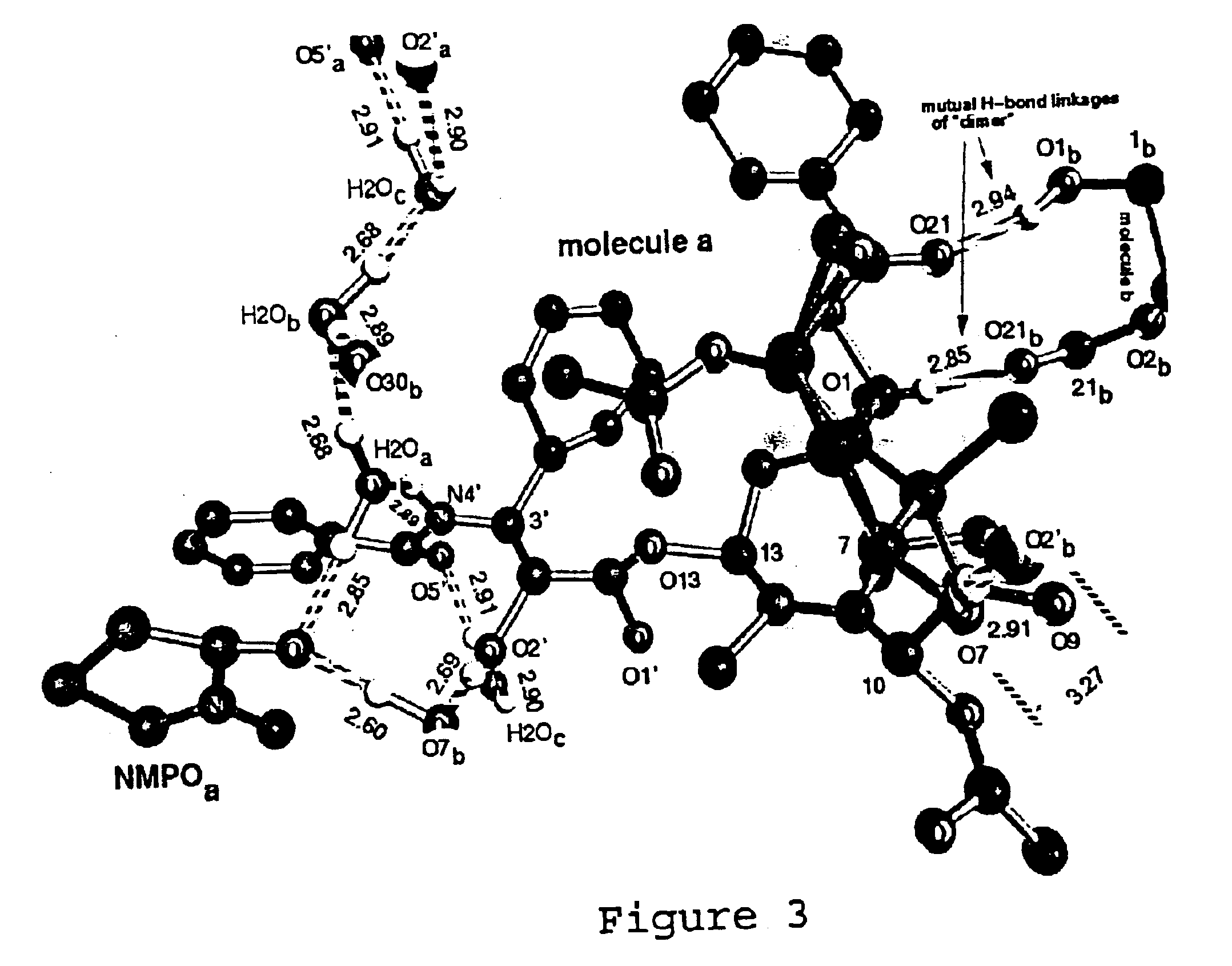Paclitaxel solvates
a technology of paclitaxel and solvates, which is applied in the field of can solve the problems of limiting the available formulations for administering paclitaxel to patients, paclitaxel is known to be poorly soluble in water, and none of the above patents disclose the crystallization of paclitaxel solvates from their respective formulations
- Summary
- Abstract
- Description
- Claims
- Application Information
AI Technical Summary
Benefits of technology
Problems solved by technology
Method used
Image
Examples
example 1
Paclitaxel Solvate Form D (NMPO)
533 mg of paclitaxel was dissolved in 26.6 mL of NMPO. To this was added 13.3 mL of acetonitrile, and then 13.3 mL of 0.1% aqueous acetic acid. The solution was heated to 40° C., and a 0.1% aqueous acetic acid solution (26.6 mL) was added in two portions. This was then cooled to 20° C. over 90 minutes and sonicated. The slurry was then heated to 58° C. and then cooled to 20° C. over 90 minutes. The slurry was then heated to 58° C., stirred for 1 hour and cooled to 20° C. over 4.5 hours. The slurry was then sonicated, reheated to 58° C. over 30 minutes and stirred at 58° C. for 1 hour. The slurry was then cooled to 20° C. over 4.5 hours, and stirred slowly for 16 hours. The slurry was then decanted and filtered. The filter cake was washed with 25% acetonitrile in 0.1% aqueous acetic acid (2 mL). The filter cake was then dried under high vacuum at 40° C. to yield a colorless solid (450 mg). The ratio of NMPO to paclitaxel by 1H NMR was 1.0:1, consistent...
example 2
Conversion of Form D to Form A
A sample of the NMPO-solvated paclitaxel of Example 1 was further dried under high vacuum at 82° C. for 16 hours to give a material containing 0.05 molar equivalents of NMPO and shown to be Form A by X-ray powder diffraction.
example 3
Paclitaxel Purification
A crude taxane mixture containing 10.66 g of paclitaxel (paclitaxel area % at 227 nm=56) existed as a solution in 1.055 L of a solvent mixture consisting of a 2:1:1 (v:v:v) ratio of NMPO / acetonitrile / 0.1% acetic acid. The solution was warmed to 40° C. with stirring and then, over a period of 80 minutes, a 0.1% aqueous acetic acid solution (520 mL in 4 portions) was added with seeding. After holding at 40° C. for 30 minutes, the slurry was allowed to cool to 20° C. over 90 minutes, then held at 20° C. for 30 minutes. The slurry was then heated to 58° C., stirred for 30 minutes and allowed to cool to 20° C. over 90 minutes. The slurry was stirred at 20° C. for 30 minutes followed by heating back to 58° C. After reaching 58° C. another addition of 0.1% aqueous acetic acid was made (520 mL) in one portion. A temperature oscillation cycle was then performed as follows:Set point 1=58° C.; period 1=45 minutes.Set point 2=58° C.; period 2=180 minutes.Set point 3=20° C...
PUM
| Property | Measurement | Unit |
|---|---|---|
| temperature | aaaaa | aaaaa |
| crystalline | aaaaa | aaaaa |
| crystal structure | aaaaa | aaaaa |
Abstract
Description
Claims
Application Information
 Login to View More
Login to View More - R&D
- Intellectual Property
- Life Sciences
- Materials
- Tech Scout
- Unparalleled Data Quality
- Higher Quality Content
- 60% Fewer Hallucinations
Browse by: Latest US Patents, China's latest patents, Technical Efficacy Thesaurus, Application Domain, Technology Topic, Popular Technical Reports.
© 2025 PatSnap. All rights reserved.Legal|Privacy policy|Modern Slavery Act Transparency Statement|Sitemap|About US| Contact US: help@patsnap.com



